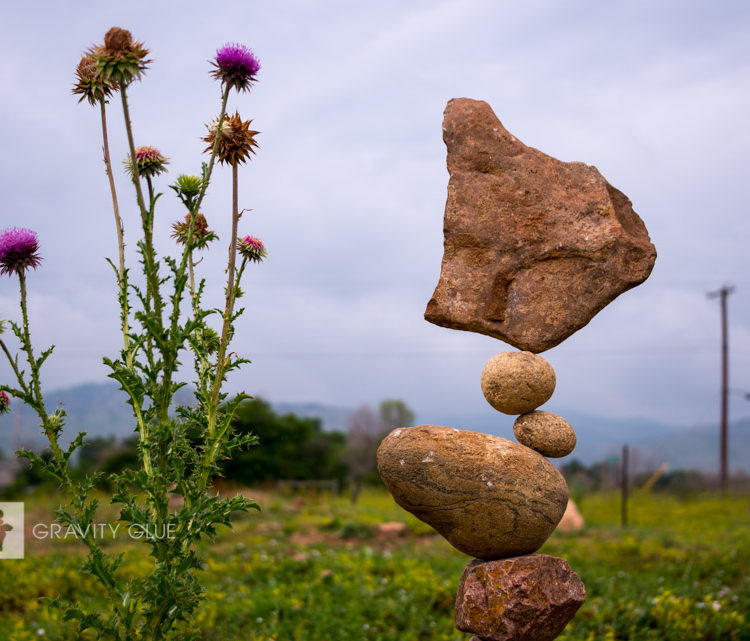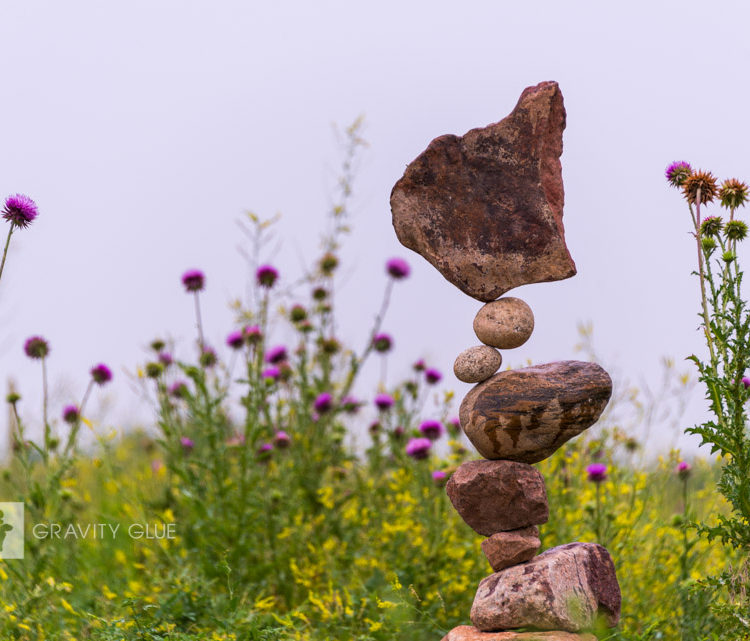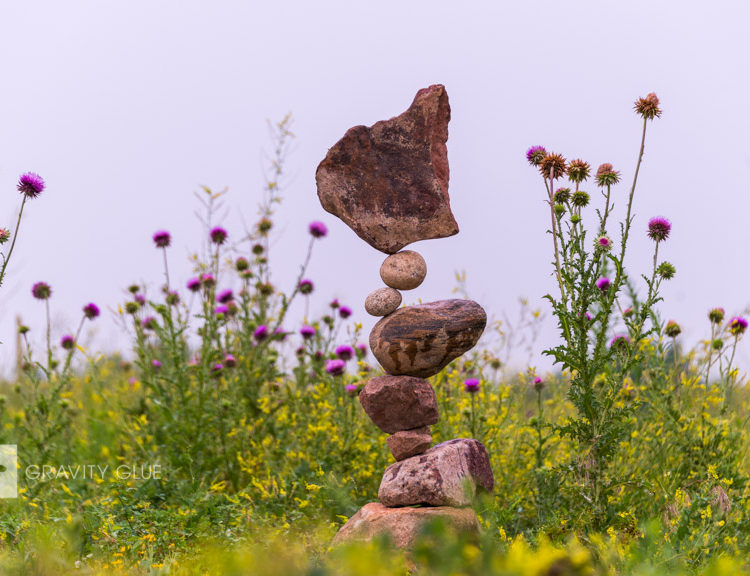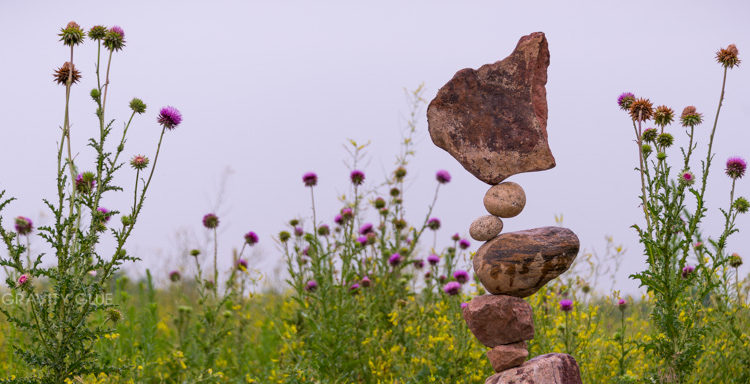steady & unbreakable
relationship with Nature,
a passionate romance
with Art & Literature,
a bloody love affair
with Life.People come & go.
Things come & go.
I come & go.
These three remain.”
This spot has bin on my radar for quite some time. my last visit was stopped by angry FEMA agents during the flood recovery here in Boulder… ha, ya those guys suck at life. now they are nowhere to be found and the weeds have overgrown the spot… pretty rocks throughout! all sorts of landscapes to play with depending on time of year and the relative stages of vegetation. here was another rainy day. everyone inside their cars or homes. me outside, laying in the mud, no fucks given besides realizing a vision. :))
This plant is known as a “Plumeless thistle” (Carduus acanthoides) or could also possibly be a “Milk” or “Scottish” thistle (Silybum marianum), not even sure what the real difference is, but wikipedia seems to differentiate. anyway, both are native to Europe and Asia. and both considered an invasive “noxious weed” in N. America and other parts, which means according to humans it is quite harmful to agriculture and pretty much anything around it, well, besides perhaps balance. the force. whatever you wanna call it. tis a member of the sunflower family. and i think it’s pretty. (just in case you’d like to know)






Shelby Johnson
Well said… and with Thistle! =)
Dario de chans hahahah
Cyrille Medi Berka
Thistle is very medicinal. Detoxification of the liver.
Ok how did you do that…
artichoke family, you can eat the little heads of fruit they make :D and steam the greens. You can watch “abandoned” fields over years and see dandelion, thistle, plantain, clover, chickweed, cleavers, yarrow, etc, move over it like taking slow, slow footsteps as they draw the nutrients necessary to restore the soil and move across the landscape, repairing it in slow motion, and then moving on for the next species come. Most of these ruderal plants are also highly medicinal for us, and native, bumble, and honey bees are all over them <3 only 'invasive' if you're out to control.
It is beautiful – my Scottish ancestry loves it!
awesome man, your selection is superb as always
Thank You. Shared. <3
Awesome as always
We have a similar type of thistle here in Southern Illinois. And, yeah, they have a bit of a bite to them — and they are considered “invasive”. :-) Beautiful, though. And made all the more beautiful when coupled with your beautiful creations!
artichokes are similar, when they bloom…
Insane man
Thank you Michael …from Arkansas
In Scotland they eat it.
Due to all the rain and moisture this year in Colorado these are flourishing.
I had a bed of these growing at my old house. The thistle down they leave behind forms a mat on which nothing will grow but more thistle.
That’s called Milk Thistle in the U.S. It’s also used as an herbal supplement.
actually a “milk thistle” is slightly different according to my research. milk thistle stems are not quite as prickly as these “plumeless thistles” .. but the flowers look almost identical. go check out “Carduus acanthoides” which is the plumeless thistle, versus “Silybum marianum” which is the milk or scotch thistle.
actually i’m still unsure.. my picture could show a milk thistle… but the two types have different scientific names for whatever reason.. . i’m confused.
It looks like the Scottish Thistle
i’m still a bit unclear about the difference between plumeless thistle and milk/scottish thistle… they appear to be nearly identical. but i guess it is possible that my photo shows a scottish thistle.. google both and have a look for yourself. each has a different scientific name. each from the same family of flower
See lots of it. Thanks for ID!
Eeyore likes them!
Thistles are beautiful and make a great composittion for balances. But they are a real pain when they take hold. Really hard to get rid of!
I think it’s pretty also. I had one a few years ago and the purple flowers turn into fuzzy white balls, they blow in the wind and then they’re everywhere. They stem is very prickly and you can’t weed it out with your hands. :(
Lots of them here in West Virginia….. I methinks they’re beautiful
Scotland’s Secret Weapon! (And National flower) :)
We get plenty of them in australia also. I believe that there edible.
Beautiful!
… It may be of interest: Also called “Rose of the Witches” its dried leaves were coarsely ground and rub on the forearms. The bites were quite painful and “is” giving hallucinations … I personally never tried. I do not like it bites of mosquitoes, do any of the plant, health ….
…and Eeyore eats thistle in the Hundred Acre Wood :D
Although I do dig them out with a spade shovel in my yard! Lol
It’s an ornamental in some countries.
I think they’re beautiful too. But, they are horrible once they get started,. We had some on the farm that grew over 5 feet! Although, it is so amusing watching horses gingerly get their lips around one to eat he heads. They also have medicinal value.
I drank thistle tea while pregnant, it’s very nourishing……..once the spines are removed!!!! :)
Awesome balance mate
personally i think the plant is beautiful. which is why i balanced rocks next to it :)
I can’t believe your balances. They’re insane and everyone I show (which is a lot) has a hard time believing it’s real.
they are beautiful indeed, here, we find them with red puppies in wheatfields. but no rocks!
Thanks…;)
<3 beautiful
A weed is a wild flower if you don’t pull it.
We in America call them weeds
Nice one Michael Grab!
I was so mezmerised by the balance, the force, that I didn’t even notice the weed.
I love thistle!
We have it here on the central Oregon coast and I think it’s beautiful as are your rocks or stones. Just a side note to one of your past posts; I’ve been around the sun almost twice as many times as you have ;) <3
Honey bees gain much-needed nutrients from thistle and many other plants that are classified as invasive species.
Caitlin, we were just wondering what those were around the lake. Strange I’d see this today.
In South Australia,
It looks very similar to something we have here in Australia. We call it the “scotch thistle” and when the thistle on top is fully formed there is an edible “nut like” centre to it which can be used in a survival situation while looking for something more substantial to eat.
Isn’t it the flower that the little girl gave the young William Wallace in Braveheart?
very similar species with nearly identical flowers. the one you are referring to is called a “milk” or “scotch” thistle. and essentially look the same, other than the stems, well actually i’m a bit unsure of the difference now. :P
I’ve always wondered what those are, exactly! I love them!
they hurt! but also very pretty!
Well………I wonder how long it took – it looks impossible :)
Seriously those last three rocks.
I tip my hat to you
How do you pull this off? Looks unreal. Bravo sir.
Lovely♡
i wanna deep dream all my photos!
haha that’ll take a long time!
Gravity & Poetry = Aweseomesauce!!
Beautiful. …
すてき!!
Rock On!
Beautiful
Keep on keeping dem stones.
just so!!
WAUTSI
I LOVE the ‘weeds’ in this photo. Just wonderful!
i love all your work and also the quotes you put up – but i adore this quote especially, thank you for reminding me
If an ET landed in the field and saw this, it would immediately know that intelligent life existed on this planet. I am in awe.
I love all of your works/arrangements. They are so beautiful! Can i share this spell from above? Identify myself totally with it :-)
May I share this picture?
<3
Feeling the Qi! ❤️
As always beautiful!
So amazing!! Beautiful…
:-)
Top piece looks gnarly. Amazing skill man, inspiring work..
Amazing
The irony in the anti rock stacker wanting to appreciate nature without a trace of man is that nature does not appreciate itself, and the only appreciation of nature ever experienced is through (a trace of) man…….
The contrast is beautiful :-) Thank you for sharing your talent as I am sure the formation does not last long. Keep on Rocking :-)
Just looking at your work and watching the videos is so relaxing! I really want to try this some time.
Michael your rock stack speaks vast volumes in contrast with the author of that “stop stone stacking’ article … we must pity the narrow minded … with compassion of course.
I want to see that
__^^!__TZ__
Though I love your riverbed works I love this one where the rocks contrast with the green, soft vegetation.
I think these rock formations are cool. I saw some in Door County a couple of yrs ago. What is the big deal? To stack rocks isn’t hurting anyone or thing. Keep on Rock’n!!
Maçawa çebu
I know you have talked about this. I love your wrk.
http://www.hcn.org/articles/a-call-for-an-end-to-cairns-leave-the-stones-alone?utm_campaign=trueAnthem%3A+Trending+Content&utm_content=559d0b2804d3011be6000001&utm_medium=trueAnthem&utm_source=facebook
<3 .. the flowers look happy for the company .. and vice versa :)
What an incredible balance, just beautiful!!!
Rocks with thistles very nice
Rise in Love with the world <3
Lovely with flowers
Amazing
thank you! :)
Michael, I love your work and have been following it for a while now. Have you seen this article? :O
http://www.hcn.org/articles/a-call-for-an-end-to-cairns-leave-the-stones-alone?utm_campaign=trueAnthem%3A+Trending+Content&utm_content=559d0b2804d3011be6000001&utm_medium=trueAnthem&utm_source=facebook
nope, but whoever wrote it is an idiot that needs something to bitch about.
That’s kid of what I was thinking!
Just read it. Moronic.
The author refers to Sedona a lot – maybe it’s a problem down there.
sounds to me like a person who tried once and failed and concluded he has no balance then went out to prove he has no balance in any aspect of his life.
every cairn I have made is a memorial to if nothing more nature itself.
exactly, do not like a cairn like Gravity Glue makes wait for the first gust of wind or rain storm and it will be gone
Wow. This guy really needs to get a life! Wish I had more to say bir I’m dumbfounded. Speechless. I love your work Michael.
well,the media thinks that they own everything,including rocks lol